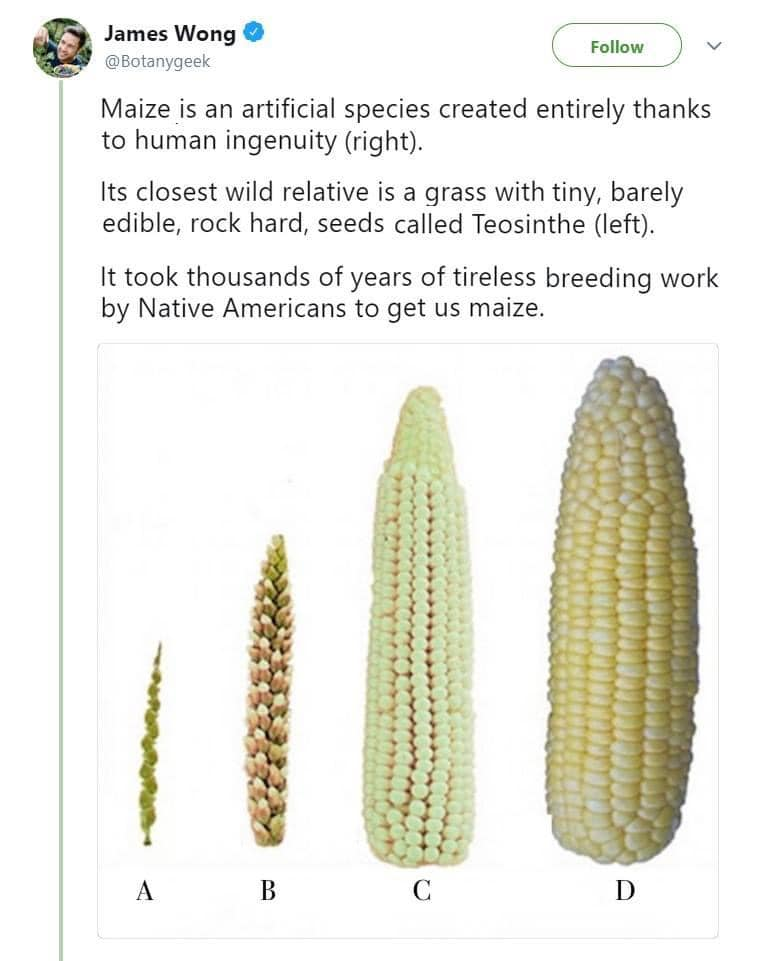Have we checked all food to see if exploding them makes them into something better or did we just stop with corn?
MST3K
Rules/guidelines/info
- Please be nice to each other
- Don't post stuff that doesn't belong
- These rules are temporary as the community is new - suggestions welcome
- Watch out for snakes!
You know you want links, baby!
- MST3K.com
- Gizmoplex
- Rifftrax
- The Mads Are Back
- The Mary Jo Pehl Show
- YouTube
- Wikipedia
- TV Tropes
- Annotated MST
- Fandom
- Suggestions welcome
This community is hosted at https://lemmy.world/c/mst3k and moderated by:
If you were a mod on /r/MST3K give me a shout.
Confused about Lemmy/Fediverse? Here's a useful infographic
Let me tell you a little story about brassicas... broccoli, cabbage, bok choi, cauliflower, kohlrabi, canola oil. They're all this little guy.
Edit: Shit! I missed the exploding part. 
I've been dipping stuff in hot oil for awhile now and it appears to work for most of them.
Potatoes Apples Marijuana Bananas Tulips Etc...
Bananas are a similar one to corn too. Take something almost entirely inedible and cultivate it into something edible. Makes you wonder what convinced them to start.

Starvation was probably a good motivator
Could be. We still don't know why people became sedentary farmers over hunter-gatherers, but it's happened many times in history.
Somehow, farming happened independently but around the same time around the world, between 8000 and 10000 years ago. This is everywhere from Europe to the Americas to New Guinea, all apparently independently of each other!
Lot of work for a dildo.
It's not worth it if you don't make an effort.
ITS BEEN A LOOOOOONG ROAD GETTIN FROM THERE TO HERE
THIS IS NOT TEN FORWARD!
I have altered the location. Pray I do not alter it further.
country girls make do
This is what these non GMO types always seem to forget: we've been modifying the crap out of everything for the past thousands of years. We're now justuch more efficient and smart about it.
They always picture someone in a lab with syringes and special machines to "modify DNA". Most of the time it's just a couple of potted plants under a lamp and a cotton swab. For fruit trees, you're pretty much just replacing a branch with another branch. Tape and staples might be involved.
Genetically modified plants is very different from selective breeding. Selective breeding mimics the natural evolution process, removing natural selection and replacing it with human decisions.
Using a separate root stock from your fruiting trees isn't genetic modification or breeding. It's just taking desirable size features from a root stock and growing your desired fruit from that. It still remains two different plant, with two different DNAs. The fruit would produce a child of the fruit tree, the same as if it was grown from seed. If the root tree was allowed to flower it would create a seed the same as if it were never grafted.
GMO are an extremely useful technology. When well regulated and tested will help produce food for the growing world population. The big problems with it are the consequences of it. Plant have been modified to tolerate high doses of weed killer, pesticides and fertilisers. These all help increase the productivity of the land, but the impacts are terrible on the local environment. Residual weed killer and pesticide may pose a risk to human as well.
Made me think immediately about GMO and non-GMO anti-science scaredy cats.
uh-maize-ing
( ͡° ͜ʖ ͡°) tireless breeding
Sorry, i don't eat gmo /s
I don't know if tireless is the right word, I'm sure they had time to sleep.
They were in no rush because they weren't forced to make red arrow go up.
What about all of the other varieties of corn? Are they not relatives to each other?
Look, if you keep asking questions, we're never going to get these crappy corn husk crafts finished.
They're called tamales!
I just watched the Good Eats episode about corn so I can answer this: Yes, popcorn, hard corn, and sweet corn are all related to each other.
I have seen this image many times in my uni courses.
-
when european first reached the continent, the breeding of the plant was heavily advance, somewhat on the right side of thr image
-
this is one of the staple crops without which we could not survive.
-
the current varieties are so productive, but they require all modern farming methods, which can be impactful
-
if you want to apply biological agriculture, the mkst recent varieties are not a good pick, unless they actively support that
-
that image also serve as a quick explaination as to how our food systems evolved. When you read ancient folk tales, or even when you read about these plants in Biblical texts, imagine the one on the mid left. A small plant capable of supporting a limited amount of people
What I think is more interesting in terms of New World staples is what the indigenous people of the Andes did with the potato. Not only did the cultivate dozens of varieties, they also learned how to freeze-dry them for long-term storage. That's amazing for people who just barely entered the bronze age by the time of European contact.
Damn I've never seen the evolution of corn like this before. Really interesting stuff!
For real tho - any estimations on how many gens/years it took/takes to get from A to at least C?
But is it non-GMO? /s
I seem to remember Bill posting a iscorngrass.com (or similar) site on twitter back when the riff was first popular. I'm not finding it if it still exists.
